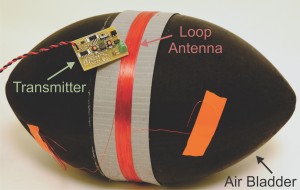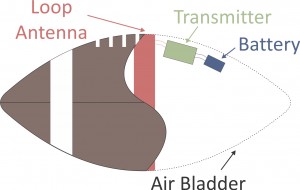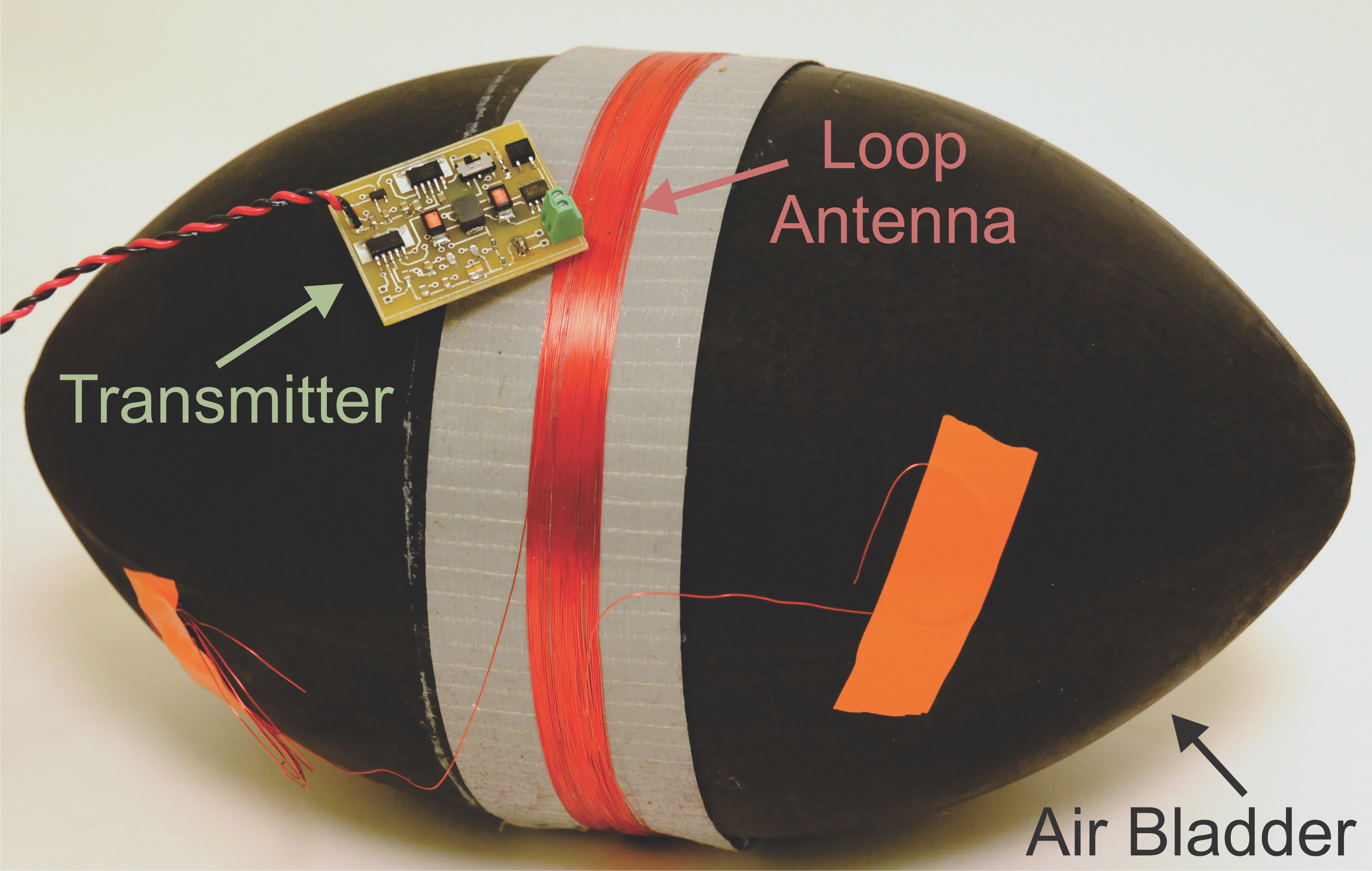
Referees may soon have a new way of determining whether a football team has scored a touchdown or gotten a first down with researchers from North Carolina State University and Carnegie Mellon University, in collaboration with Disney Research, having developed a system that can track a football in three-dimensional space using low-frequency magnetic fields.
Previous attempts to design technology that tracks the position of a football have used high frequency radio waves. But these waves are absorbed by players and can be thwarted by the complex physical environment of a football stadium. Because the technology would be most useful in pile-ups, when the ball is obscured by players, these high-frequency approaches aren’t practical–the absorbed radio waves would result in incorrect or incomplete data on where the ball is located.
“But low frequency magnetic fields don’t interact very strongly with the human body, so they are not affected by the players on the field or the stadium environment,” said David Ricketts, an associate professor of electrical and computer engineering at NC State and senior author of a paper describing the research, in a press statement on 13 June.
The researchers designed and built a low frequency transmitter that is integrated into a football, and is within the standard deviation of accepted professional football weights. In other words, the football that has the built-in transmitter could be used in a National Football League game.
Antennas, placed around the football field, receive signals from the transmitter and track its location.
But the researchers also had to address another issue.

When low frequency magnetic fields come into contact with the earth – such as the playing surface – the ground essentially absorbs the magnetic field and re-emits it. This secondary field interacts with the original field and confuses the antennas, which can throw off the tracking system’s accuracy.
“We realized that we could use a technique developed in the 1960s called complex image theory,” said Darmindra Arumugam, lead author of the paper and a former Ph.D. student at Carnegie Mellon now at NASA’s Jet Propulsion Laboratory.
“We’re still fine-tuning the system, but our goal is to get the precision down to half the length of a football, which is the estimated margin of error for establishing the placement of the football using eyesight alone,” Ricketts said.
The paper, “Three-Dimensional Position and Orientation Measurements using Magnetoquasistatic Fields and Complex Image Theory,” was published online this month in IEEE Antennas and Propagation Magazine.
Co-authors include Dan Stancil, head of NC State’s Department of Electrical and Computer Engineering; and Joshua Griffin, formerly of Disney Research.
